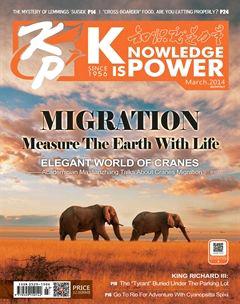Elegant World Of The Cranes
There are 15 kinds of cranes in the world, 9 kinds of them are spread in our country, they are red-crowned crane, white-naped crane, white-head crane, grey crane, black-necked crane, demoiselle crane, white crane, sandhill crane and red-necked crane. The first six kinds have records of breeding and wintering in our country. Our country is also the wintering place of white cranes, the white cranes living through winters in the Poyang Lake of Jiangxi Province are more than 99% in quantity of the world、
The Responsible Parents
Every March and April, the red-crowned cranes will move to the breeding places. After arrived, they begin to prepare for the breeding. Those mature cranes will try their best for the courtship. The grown-up cranes with young cranes may have some troubles to drive the young cranes away from home, they should let the young cranes do their own thing, in this way the mature cranes can breed without disturb. After successful doubling, the red-crowned cranes will build their nests at once. They have high environmental requirements of the nests, which is always in the reed swamp areas, and far away from people. There should be surplus reed, used as the materials to build a nest, as well as a shield. The nests should not be far from water. Normally, the red-crowned crane in the wild lay only one nest of eggs each year, and two eggs in each nest. The breeding of red-crowned cranes is not only the mothers work, but also the fathers, they take turns to hatch the eggs. One of them hatches, another one finds food and keep on the alert against enemies. After the 31 to 33 days of hatching, the baby cranes will break the eggs and come out.
The Migration Of Red-crowned Cranes
There are two populations of red-crowned cranes in the world: the resident generation spread in Hokkaido of Japan, there are about 1500 of them (KunikazuMomose, 2012); another migratory generation are spreaded in the East Asian Continent, there are about 1300 of them (Su Liying, 2012). The migratory generation in the East Asian Continent live through winters in the Yan City, yellow river delta of China, as well as the demilitarized zone in the middle of Korean Peninsula, they breed in Chinas Songnen Plain, Three River Plain, Liaohe River Basin and Hui River Wetland, as well as the Bureya River Wetland.
Every March and April of spring, the red-crowned cranes leave the wintering ground to the breeding ground, begin their breeding activities once a year. In October and November, they take the young birds with them, leave the breeding ground and go back to the wintering ground.
The Culture Of The Cranes
The earliest records about the crane culture is in “the Book of Songs” 3000 years ago, it says “ the crane twitters in the sky, and its sound can be heard in the wild”.
Since then, from the Western Zhou Dynasty to the Qing Dynasty, there are about 120 writers who have wrote about 160 poetries about cranes (Hu Hongtao and Mo Rong, 1994), they unburdened their heart with the cranes. From the Ming and Qing Dynasty to the early 20th century, people of our country still have enthusiasim for feeding and watching cranes. They had meticulous observations on red-crowned cranes, and corrected the mistakes of the description in history that the cranes are poisonous. In the ordinary peoples lives of the modern times, there are many figures of cranes, such as on the wall painting, chests, cups and the fans.

